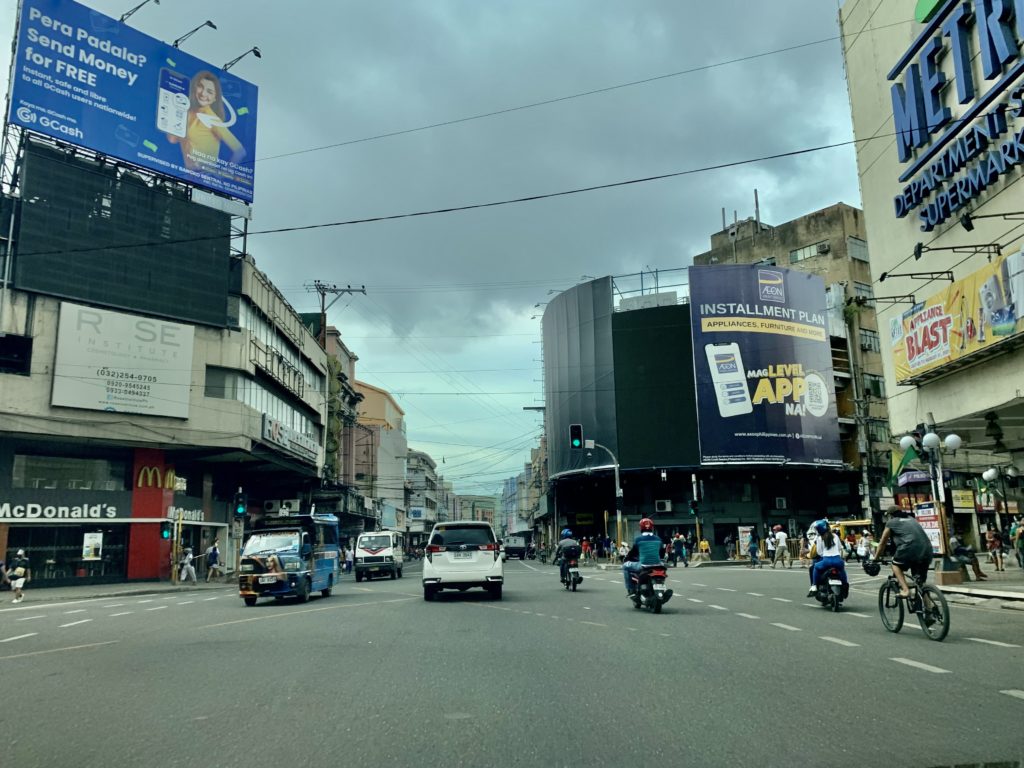
Colon street in downtown Cebu City. CDN Digital photo | Brian J. Ochoa
CEBU CITY, Philippines — Is Cebu City a “walkable” city?
This question has recently started discussions in homes, cafes, and online forums, and it is made more relevant and timely as the city government advances its plan to pedestrianize the downtown area.
While some hail it as a leap toward sustainability and heritage preservation, others remain skeptical due to practical challenges and the realities of urban life.
In June 2024, the Cebu City government unveiled its pedestrianization project for downtown Cebu. The initiative aims to reduce vehicle traffic, expand walkways, and, more importantly, preserve the city’s iconic landmarks, such as the Basilica Minore del Sto. Niño and Magellan’s Cross, from pollution and overcrowding.
READ MORE:
Are pedestrian lanes still safe in Cebu City? Motorists, commuters weigh in
Cebu City plans downtown pedestrianization with trees, walking paths starting year-end
Cebu City ‘not ready for pedestrianization,’ says council’s transport head
City officials believed pedestrianization could rejuvenate the downtown area, boosting local businesses by increasing foot traffic and drawing people back from suburban malls.
It extends beyond heritage preservation and economic revival as it aspires to improve public safety and environmental sustainability.
Despite its promising goals, the project still needs to overcome hurdles. Cebu City Councilor James Cuenco, chairman of the Committee on Transportation, Communication, and Other Utilities, expressed doubts about its feasibility, particularly given Cebu’s tropical climate.
“Due to climate change, [Cebu] experiences extreme weather conditions. When it’s summer, it’s very hot, and during the rainy season, the rain pours heavily, leading to flooding,” Cuenco explained.
Public feedback, however, has the same concerns. In a Facebook poll conducted by CDN Digital on November 28, 2024, netizens highlighted several obstacles to walkability.
One user commented, “Before sobra [ka-safe], karun dli nakasure kanang kasabay nimo og lakaw dunggabon na ka kay lahi na rung panahuna. Mag sige nakag hunahuna kong buhi pa ba ka maoli sa balay. Mas better be safe lang jud tawun lisod na run.
(Before, yes, it was really [safe], now, you cannot be sure about the person, whom you are beside or behind you while you are walking, he or she might stab you because these times it is really different. You often think about if you would still be alive when heading home. It would be better to be safe, in these times, it really is difficult.)
Others stressed the need for better infrastructure and leadership, with one remarking, “It could work with the right discipline and infrastructures in place. It takes a lot of dedication and action from everyone.”
Crime remains a concern
Crime remains another significant concern, despite Cebu City Police Office (CCPO) data showing a 10 percent decrease in overall crime incidents as of May 2024. Reduced cases of theft, robbery, and physical injuries signal progress, but public perception of safety lags behind.
Nigel Paul Villarete, urban planner and civil engineer, weighed in on the debate.
He said that walkability was highly subjective and would depend on factors like distance, pathway quality, and heat.
He identified areas such as IT Park and Osmeña Boulevard as relatively walkable but mentioned the need for further enhancements.
“Osmeña Blvd. is a good place because there are plenty of trees and most places are fairly shaded. We can either plant more trees or build shaded sidewalks. This one, ‘shaded sidewalks,’ I hope the City would study and, if possible, provide funds for,” he said.
He lauded the Link to the Port initiative, part of the Cebu Bus Rapid Transit (BRT) project funded by the World Bank and Agence Française de Développement (AFD). However, he urged the city to expand and sustain such efforts, suggesting dedicated funds in the city’s annual budget for pedestrian-friendly infrastructure.
Increasing population, vehicle count
Villarete also pointed out that Cebu’s increasing population and vehicle count were outpacing the city’s ability to build new roads.
He warned against over-reliance on flyovers and elevated expressways, which he described as temporary fixes exacerbating car dependency.
“Our roads are getting more congested, and no more new roads are being built. Everything’s growing—our population, the number of cars/vehicles—but our ability to build more roads is constrained by both lack of space and lack of funds,” Villarete cautioned.
Instead, he advocated for efficient mass transportation systems and walkability improvements as long-term solutions to mobility and congestion issues.
“The only and best solution to our mobility is good and efficient public transportation and to improve as a walkable city,” he concluded.

